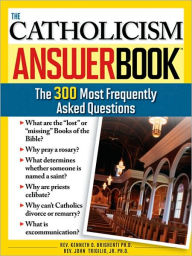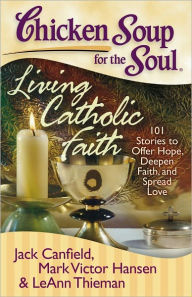RAYMOND ARROYO is the news director and lead anchor at EWTNews. As host of the international newsmagazine, The World Over Live, he is seen in more than 110 million households each week. Arroyo has worked at the Associated Press, the New York Observer, and for the political columnist team of Evans and Novak. His writings have appeared in the Wall Street Journal, the National Review, the Financial Times, and other publications. He has been featured on the Today show, Good Morning America, Access Hollywood, and various cable outlets, where he frequently comments on matters of culture and faith. He lives in New Orleans with his wife and three children.
Mother Angelica: The Remarkable Story of a Nun, Her Nerve, and a Network of Miracles
Paperback
(Reprint)
Choose Expedited Delivery at checkout for delivery by. Monday, November 25
In 1981, a simple nun, using merely her entrepreneurial instincts and $200, launched what would become the world’s largest religious media empire in the garage of a Birmingham, Alabama, monastery. Under her guidance, the Eternal Word Television Network grew at a staggering pace, both in viewership and in influence, to where it now reaches over a hundred million viewers in hundreds of countries around the globe.
Raymond Arroyo combines his journalist’s objectivity and eye for detail with more than five years of exclusive interviews with Mother Angelica. He traces Mother Angelica’s tortured rise to success and exposes for the first time the fierce opposition she faced, both outside and inside of her church.
Customers Who Bought This Item Also Bought
-
- Mother Angelica's Little…
- by Raymond Arroyo
-
- Saint Francis of Assisi
- by G. K. ChestertonJoseph F. Girzone
-
- Mother Teresa: Come Be My…
- by Mother TeresaBrian Kolodiejchuk
-
- Jesus and the Jewish Roots of…
- by Brant PitreScott Hahn
-
- An Exorcist Explain the…
- by Fr. Gabriele Amorth
-
- Life of Christ
- by Fulton J. Sheen
-
- The Confessions of Saint…
- by AugustineSt AugustineJohn K. RyanJohn K. Ryan
-
- Hostage to the Devil - Reissue…
- by Malachi MartinMalachi Martin
-
- No Man Is an Island
- by Thomas Merton
-
- Catholicism Answer Book: The…
- by John TrigilioKenneth Brighenti
-
- Saint Thomas Aquinas
- by G. K. ChestertonAnton C. Pegis
-
- The Inner Voice of Love
- by Henri J. M. Nouwen
-
- Chicken Soup for the Soul:…
- by Jack CanfieldMark Victor HansenLeann Theiman
-
- Angels All Around Us: A…
- by Anthony DeStefano
-
- Flash: The Homeless Donkey Who…
- by Rachel Anne RidgePriscilla Shirer
Recently Viewed
“In this dramatic page-turner, Raymond Arroyo has captured the life and lessons of Mother Angelica, a woman who may well be the patron saint of CEOs. Buy this book and be inspired.”
—Lee Iacocca, The Iacocca Foundation, former chief executive officer of the Chrysler Corporation
“Raymond Arroyo masterfully captures the complexities, humanity, and tenacity of Mother Angelica, who has long been one of my own personal heroes. The founder of the Eternal Word Television Network, Mother Angelica is a woman who dared to dream, to stand up for what she believed in, and whose faith showed that anything is possible. In Arroyo’s hands, she becomes someone you wish you had the opportunity to know and love. Read this book and believe.”
—Nicholas Sparks
“This is some woman. What a wonderful story Raymond Arroyo has written—wonderful because it’s true, because he got the facts, because she chose him to tell them, and because he’s a born storyteller.”
—Peggy Noonan, author of When Character Was King
“Mother Angelica’s personal words to me, her courageous example, and her constant prayers helped inspire my portrayal of Jesus in The Passion of the Christ. No one could have captured the essence of this modern-day saint better than Raymond Arroyo. His narrative gifts and understanding of Mother are clearly evident in this truthful and often candid depiction of one nun’s struggle to bring God to the multitudes. Surely this book, and Mother’s life will have an incredible enduring legacy.”
—James Caviezel, actor
“Mother Angelica is one of the greatest entrepreneurs of all time, and is truly one of my heroes. With his “insider” perspective, Raymond Arroyo has done a masterful job capturing not only Mother’s immeasurable accomplishments but also her remarkable personality. Like Mother herself, this book has the unique combination of being both inspiring and entertaining.”
—Thomas S. Monaghan, founder of Domino’s Pizza and Chancellor of Ave Maria University
“A rattling good story of fear, faith, courage, and bulldog tenacity, beautifully told. The drama of Mother Angelica’s life is a powerful reminder that the extraordinary lies just beyond the ordinary—if we have eyes to see and ears to hear.”
—George Weigel, author of Witness to Hope:Tthe Biography of Pope John Paul II















